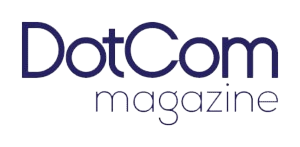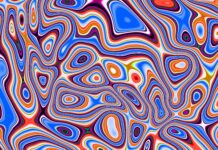In today’s hyper-competitive fashion landscape, understanding how AI in the fashion advertising campaigns is reshaping brand strategy is no longer optional—it’s essential. From personalized content to predictive targeting, AI in the fashion advertising campaigns is revolutionizing how brands connect with consumers, optimize budgets, and measure impact. Whether you’re a luxury label or a fast-fashion disruptor, embracing AI in the fashion advertising campaigns is the key to staying relevant, agile, and ahead of the curve.
1. AI Enables Hyper-Personalized Advertising
One of the most powerful applications of AI in fashion advertising is its ability to deliver hyper-personalized content. Traditional demographic targeting is being replaced by dynamic, behavior-based segmentation. AI analyzes browsing history, purchase patterns, social media activity, and even sentiment to craft ads that resonate on an individual level. This personalization increases engagement, click-through rates, and ultimately conversions. Consumers are more likely to respond to ads that feel tailored to their tastes, and AI makes that possible at scale.
2. Predictive Analytics Optimize Campaign Timing and Budget
AI doesn’t just personalize content—it predicts outcomes. By analyzing historical data, seasonal trends, and external variables like weather or cultural events, AI can forecast the best times to launch campaigns and allocate budgets. This means brands can avoid overspending during low-engagement periods and capitalize on peak moments. Predictive analytics also help determine which platforms and formats will perform best for specific audiences, making every dollar count.
3. AI-Powered Visual Recognition Enhances Creative Strategy
Fashion is a visual industry, and AI is transforming how brands approach creative design. Visual recognition tools can analyze thousands of images to identify which styles, colors, and compositions perform best. This data-driven insight allows advertisers to create visuals that align with current trends and consumer preferences. AI can even generate new creative concepts based on successful patterns, streamlining the design process and boosting campaign effectiveness.
4. Chatbots and Conversational AI Drive Engagement
AI-powered chatbots are no longer just customer service tools—they’re integral to advertising campaigns. Brands use conversational AI to engage consumers directly within ads, offering product recommendations, answering questions, and guiding users through the purchase journey. These interactions feel personal and immediate, increasing the likelihood of conversion. As natural language processing improves, chatbots are becoming more intuitive, persuasive, and brand-aligned.
5. AI Facilitates Real-Time Ad Optimization
Gone are the days of launching a campaign and waiting weeks for performance data. AI enables real-time optimization by continuously analyzing metrics like impressions, clicks, conversions, and bounce rates. If an ad isn’t performing, AI can automatically adjust targeting, creative elements, or placement to improve results. This agility ensures that campaigns remain effective throughout their lifecycle and adapt to changing consumer behavior.
6. Influencer Selection and ROI Are Enhanced by AI
Influencer marketing is a staple in fashion advertising, but choosing the right influencer can be tricky. AI simplifies this process by analyzing engagement metrics, audience demographics, content relevance, and even authenticity. Brands can identify influencers whose followers align with their target market and predict the ROI of potential collaborations. AI also monitors campaign performance in real time, allowing brands to pivot strategies if needed.
AI doesn’t just personalize content—it predicts outcomes. By analyzing historical data, seasonal trends, and external variables like weather or cultural events, AI can forecast the best times to launch campaigns and allocate budgets. This means brands can avoid overspending during low-engagement periods and capitalize on peak moments. Predictive analytics also help determine which platforms and formats will perform best for specific audiences, making every dollar count.
7. AI Supports Ethical and Inclusive Advertising
Consumers are increasingly demanding ethical and inclusive representation in fashion advertising. AI helps brands meet these expectations by analyzing campaign content for diversity, tone, and cultural sensitivity. Machine learning models can flag potentially problematic imagery or language before ads go live. Additionally, AI can identify gaps in representation and suggest ways to make campaigns more inclusive, fostering stronger emotional connections with diverse audiences.
8. Voice Search and Smart Assistants Influence Ad Strategy
As voice search becomes more prevalent, fashion advertisers must adapt their strategies accordingly. AI helps optimize content for voice queries, ensuring that ads are discoverable through smart assistants like Alexa, Siri, and Google Assistant. This includes using natural language, answering common questions, and structuring content for conversational engagement. Brands that embrace voice-optimized advertising will gain a competitive edge in a rapidly evolving search landscape.
9. AI Enables Seamless Cross-Platform Integration
Fashion consumers interact with brands across multiple platforms—Instagram, TikTok, websites, apps, and more. AI ensures that advertising campaigns are cohesive and consistent across these touchpoints. By analyzing user behavior across channels, AI can deliver unified messaging that adapts to each platform’s format and audience. This cross-platform intelligence enhances brand recall and creates a seamless consumer experience.
AI doesn’t just personalize content—it predicts outcomes. By analyzing historical data, seasonal trends, and external variables like weather or cultural events, AI can forecast the best times to launch campaigns and allocate budgets. This means brands can avoid overspending during low-engagement periods and capitalize on peak moments. Predictive analytics also help determine which platforms and formats will perform best for specific audiences, making every dollar count.
10. AI Provides Deep Insights for Post-Campaign Analysis
The value of AI doesn’t end when a campaign concludes. Post-campaign analysis powered by AI offers deep insights into performance, audience behavior, and ROI. Brands can understand which elements drove engagement, which demographics responded best, and where improvements are needed. These insights inform future campaigns, making each iteration smarter and more effective. AI turns data into actionable strategy, closing the loop between execution and optimization.
AI doesn’t just personalize content—it predicts outcomes. By analyzing historical data, seasonal trends, and external variables like weather or cultural events, AI can forecast the best times to launch campaigns and allocate budgets. This means brands can avoid overspending during low-engagement periods and capitalize on peak moments. Predictive analytics also help determine which platforms and formats will perform best for specific audiences, making every dollar count.
Conclusion: Embracing the Future of Fashion Advertising
The integration of AI in the fashion advertising campaigns is not a trend—it’s a transformation. From personalization and predictive analytics to ethical representation and real-time optimization, AI is redefining how fashion brands connect with consumers. Those who embrace these technologies will not only enhance their advertising effectiveness but also build stronger, more meaningful relationships with their audiences. The future of fashion advertising is intelligent, responsive, and deeply human—and AI is the catalyst driving that change.














